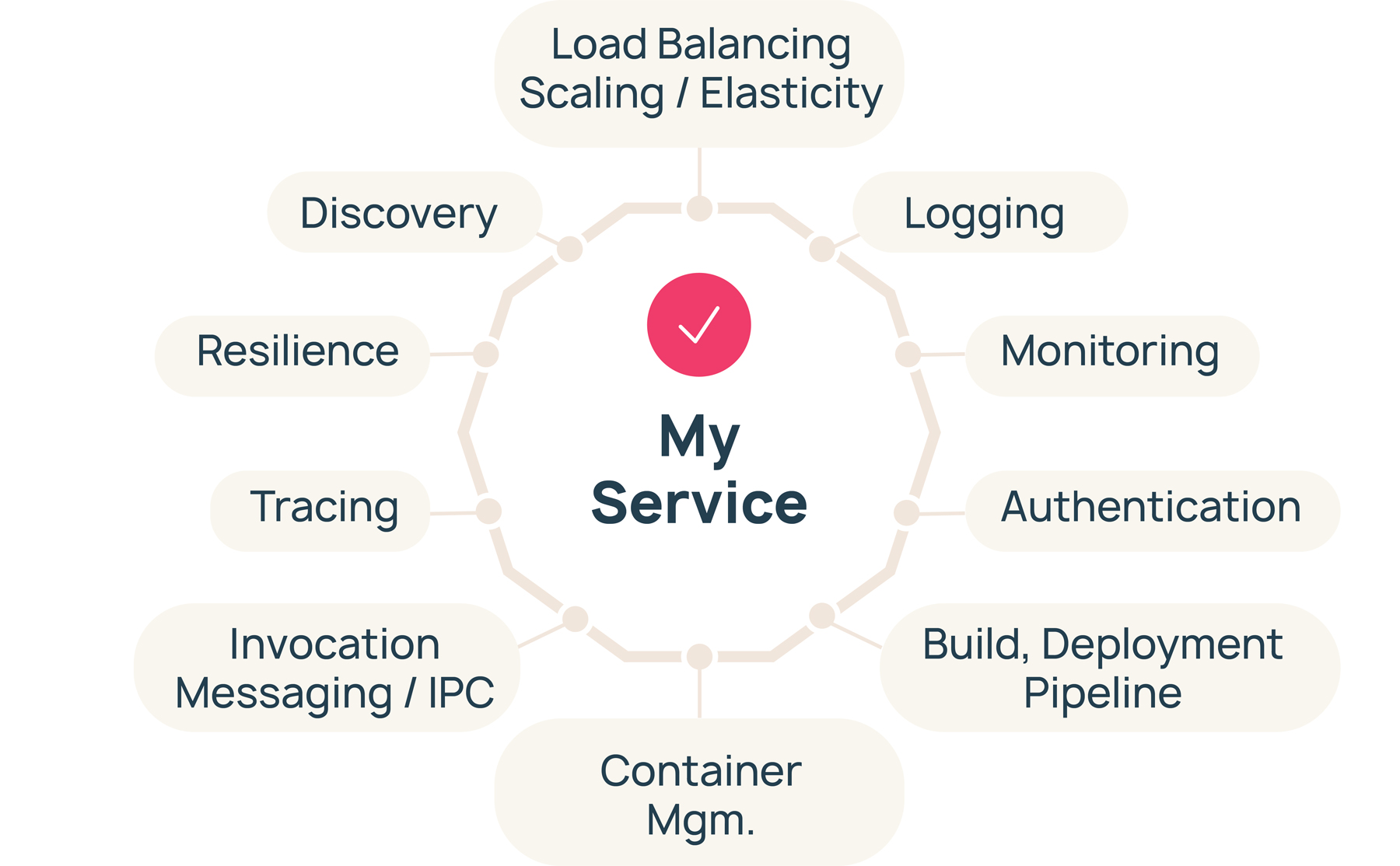The concept of microservices has revolutionized the way we design and deploy software systems. Coined in the early 2010s, the term "microservices" gained widespread usage as organizations sought more modular and scalable architectures. At Infodation, we embraced this paradigm shift around ten years ago, pioneering the adoption of microservices to deliver robust, scalable, and reliable solutions for our clients.
“When your system has one or more key requirements, a microservices architecture is likely the best choice.”
What We Have Learned (So Far)
Over the past decade, the software industry has gleaned invaluable insights into the implementation and management of microservices. Here are some key lessons we've learned:
- No Perfect Size: Finding the right size for a microservice is complex, with no one-size-fits-all solution. Whether it's based on business value, technical logic, or organizational structure, each approach has its own challenges.
- Cognitive Overload: Ironically, microservices can increase complexity due to the compound nature of managing many services, shifting requirements, and adhering to 12-factor app principles. This can lead to cognitive overload for developers.
- Loss of Overview: As systems grow, maintaining clear oversight, traceability, and observability becomes challenging. Effective monitoring is crucial to manage this complexity.
- Accountability of the Ecosystem: Microservices turn a single system into an interconnected ecosystem, requiring holistic governance and accountability.
- Micro-Frontends: Backend microservices often pressure the frontend to adopt a micro-frontend architecture. Without this alignment, new backend functionality must be suppressed, increasing complexity and reducing lead time for changes.

Should You Use Microservices Today?
Certainly, but not as automatically as in the past. When your system has one or more key requirements, a microservices architecture is likely the best choice. These key requirements are:
- High or erratic scalability: Microservices allow individual components to be scaled independently, making it easier and more cost-effective for workloads with high and unpredictable peaks in demand
- Fast time-to-market: Smaller, independent services enable quicker development cycles and more frequent deployments, making it ideal for green or brown -field environments
- Diverse technology stack: When the system needs to use diverse technologies , microservices architecture offers a natural framework to glue them together to one system.
- System resilience: When the system is logically able to keep working when some sub-parts fail, then microservices offers Fault isolation which allows the system to continue in such a situation.
- Maintenance and Updates: Microservices architecture allow changes to be made to individual services without affecting the entire system
However, it's essential to evaluate your unique requirements and consider other architectural options when necessary. Here are some alternatives to consider:
- Monolithic Architecture: Ideal for simpler applications with lower scalability demands.
- Service-Oriented Architecture (SOA): Focuses on integrating services across different systems, suitable for large enterprises.
- Event-Driven Architecture: Best for applications that need to respond to a high volume of events in real-time.
- Serverless Architecture: Allows you to build and run applications without managing infrastructure, perfect for variable workloads.
- Layered (N-Tier) Architecture: Separates concerns into different layers, enhancing maintainability and scalability.
- Hexagonal Architecture: Promotes a clear separation between the core logic and external components, improving testability and flexibility.
At Infodation, we are deeply committed to your success. Our promise is to deliver software that remains modern, is extensible, scalable, and reliable. If you're uncertain about the architecture of your current system, considering a redevelopment, or planning a new system, reach out to us today. Let our team of experts guide you through every step of the process, ensuring your systems are built to last and drive your business forward. Contact us now and let's build the future together.



